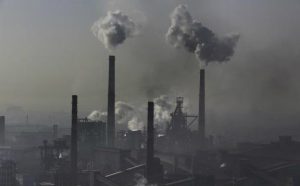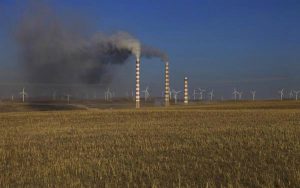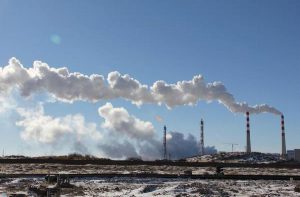China’s coal production has fallen for the first time this century, official statistics on Monday showed, as tougher environmental controls and greater availability of low carbon energy helped curb consumption of the fuel blamed most for climate change and the country's choking smog.
Stockpiles at coal companies at the end of 2014 were 2.6 percent above the beginning of last year, while reserves at power plants were up 17.1 percent, suggesting that demand has fallen sharply as several trends combined to reduce coal consumption for the first time since 2000.
Greater output of hydro electricity, increased energy efficiency, shutdowns of old, energy-intensive industrial plants and big additions of new renewables capacity all took their toll on coal last year, developments that are likely to be longer-term rather than temporary, says Lauri Myllyvirta, an energy analyst with Greenpeace.
“Only one of these six factors – high hydropower utilisation rates – is a yearly fluctuation, the rest potentially reflecting long term structural shifts,” he said in a blog.
Moves by central, provincial and local governments to improve China’s chronic air quality and shut down old and inefficient coal-fired power plants were also curbing demand, Jiang Zhimin, vice president at the CNCA, told Xinhua.
He added that coal output is expected to fall a further 2.5 percent this year.
The figures will be encouraging for those who have predicted that China’s coal consumption could peak before the end of the decade as the central government tries to limit coal use and encourage sustainable growth through its 13th five-year plan (2016-2020), which will be discussed by senior Communist Party members at the National People’s Congress in March.
Permanent shift?
In a joint announcement with the US last November, China promised to cap its coal consumption at 4.2 million tonnes by 2020 and peak its greenhouse gas emissions by 2030, a move that was aimed to inject momentum into UN climate talks ahead of the Paris summit at the end of this year.
Analysts are sharply divided on whether a peak in coal consumption is imminent, with some taking the view that a shift in capacity from eastern to western provinces may mean that overall demand continues to increase and locks in coal demand for decades.
But tougher regulations on coal-fired power plants, curbs on coal-to-gas facilities, and increasing amounts of new renewables capacity backed by superefficient power grids are likely to decrease coal’s current 67 percent share of China’s energy mix, other observers say.
The pace of this shift is likely to be highly dependent on how the next five-year plan provides incentives to renewables, curbs that are placed on coal and market prices for other forms of energy.
Last week at the World Economic Forum in Davos, Switzerland, the head of China’s central bank Zhou Xiaochuan said he was worried that weaker fossil fuel prices could slow investment in low-carbon forms of electricity generation.







